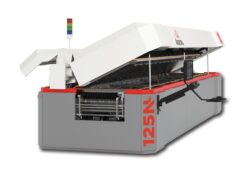Cycling is a popular sport. Under exertion, however, it exposes the body to considerable mechanical stress: 10 hours of cycling means 54,000 pedal strokes and as many bends of the knee, hip, postural muscles and joint restrictions. The repetitive movement of pedalling places great demands on tendons and joints. This can lead to functional and biomechanical dysfunctions and thus be the cause of pain and injuries, combined with a drop in performance and training standstill.
According to a study (Clarsen Krosshaug, 2010), professional cyclists often complain of pain, especially in the back (85%) or in the knees (57%). In addition to avoiding pain or even injuries, any increase in performance plays a major role in professional sport. The most diverse bike fitting methods are now used to adapt the bike to the individual needs of the athlete.
The French bike fitting specialist AR-Entraînement focuses primarily on the evaluation of the specific performance requirements and physical abilities of the individual cyclists. This is because every cyclist has different requirements, both in terms of physical conditions such as body size, lever length of the extremities or weight, and in terms of physical and coordinative abilities, such as mobility. In collaboration with the professional racing bike team Vital Concept B&B Hotels, AR-Entraînement has developed an analysis system that is used primarily in their performance center.
The bike fitting specialist combines static, dynamic and perceptive analysis methods. “The system is based on practical experience and exchanges with fitness trainers, osteopaths and doctors from the world of cycling, on the theoretical examination of scientific findings and on common sense,” explains Managing Director Alban Renaud.
For analysis, the professional’s bicycle is fixed in a roller trainer. An IDS camera is positioned exactly parallel to the bike and rider to record this set in a two-dimensional X-Y axis.
While the cyclist pedals with different intensity and in different positions, the camera captures the motion sequence. In high quality and with high frequency (60fps) changes of the joint angles are recorded exactly and without any distortion. The IDS camera, connected to a powerful laptop via USB 3.0, transfers the data using free motion analysis software.
The direct effects on the respective mechanical parameters of the rider are measured, i.e. the influence of force, movement and pedal technology. Movement-related deformations are taken into account, because pedal movement is not simply pedaling in a circle: The joint angles of the riders show deviations of up to 15° degrees. The resulting constantly changing effect on the entire body influences the overall efficiency of pedaling.










